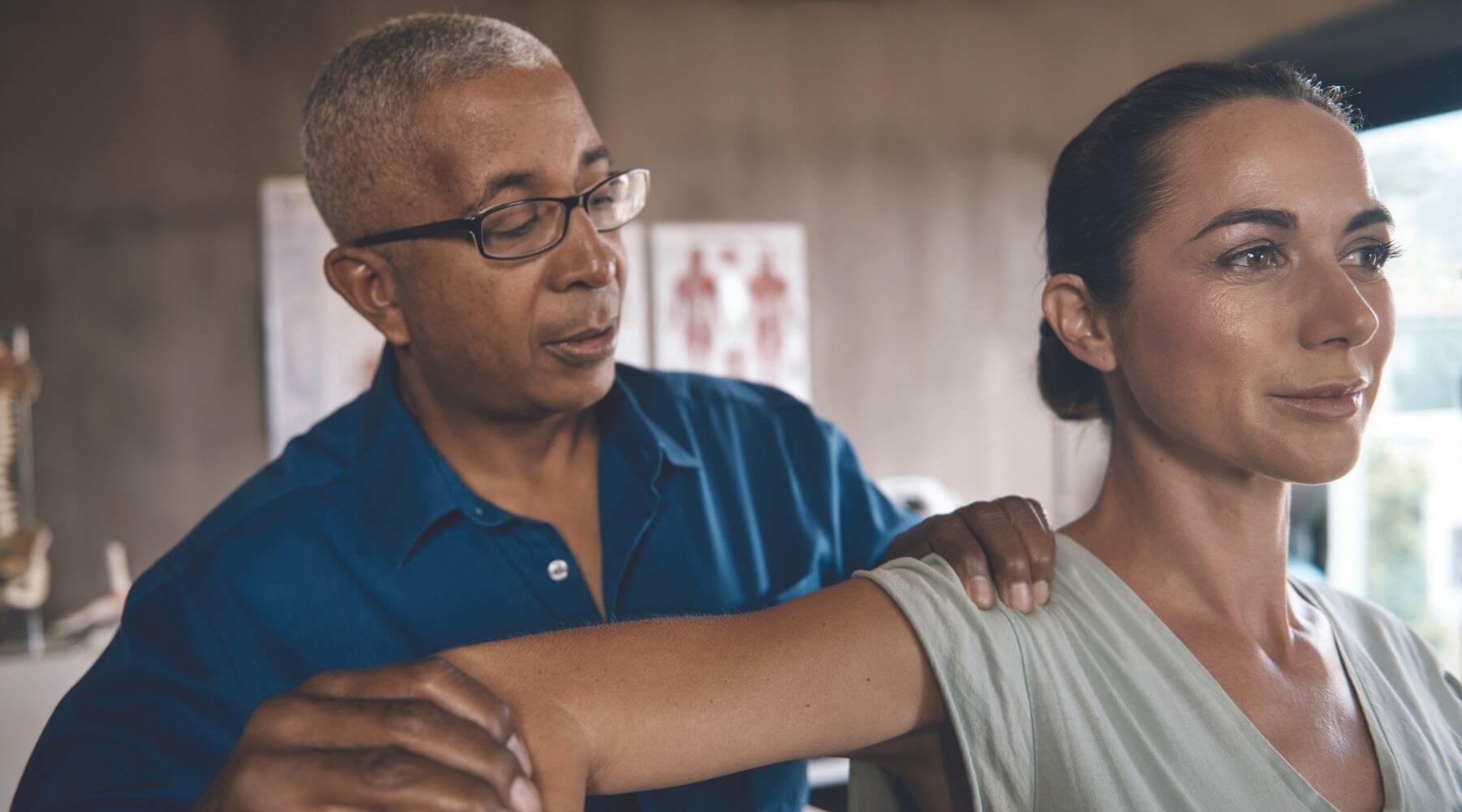Tennis Elbow/Lateral Epicondylitisin Ocean Township and Sea Girt
Tennis elbow is a common injury resulting from overuse. At SOAR, we’ll help you find long-term relief from your pain and prevent future recurrences.
Our expert physical therapists will develop a treatment plan to help you manage your current pain, adjust your activities, and prevent your symptoms from returning. Your therapist will ensure that everything from your neck down to your hand is moving correctly and that you have the appropriate strength to best support the elbow and eliminate pain.
Contributing factors can include:
Overuse, such as playing racquet sports or upper body intensive work activities, can result in excess stress at the outside of the elbow creating pain and inflammation at the joint. The common extensor tendon which connects the muscles of the hand and forearm to the elbow is the primary area impacted. Common symptoms of tennis elbow include burning pain and/or tingling at the elbow that moves around and pain that is most intense with a straight arm and twisted wrist.
Solutions for tennis elbow include:
After an evaluation, your physical therapist will help you reduce and relieve pain immediately with the use of a supportive brace, suggest activities to avoid in the short term, and teach you exercises to improve mobility and strength in the arm and hand. You may benefit from icing or heat application to reduce the pain you are feeling after activities. Generally, the best solution for tennis elbow is to stop activities that worsen the pain in the short term and build up the correct movement patterns and strength to prevent it from returning.

